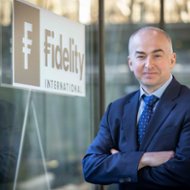Fundamental investors represent a small and ever shrinking share of equity market participants, especially in the US, changing the landscape for active managers.
We sat down with Dmitry Solomakhin, Portfolio Manager of the Fidelity Global Long Short Fund, to discuss how shifting structures are influencing market dynamics, his latest views on markets, and how his contrarian strategy fits into clients’ broader portfolios.
The rise of passive investing has been a dominant theme in recent years. Why does the changing composition of the market matter?
The rise of passive investing has been a major factor, but the shift has been broader than this. Fundamental investors—those who analyse companies as real businesses and invest with a multi-year view—now account for only around 6–7% of US trading volumes. The rest is dominated by passive flows, retail traders, and systematic strategies.
These participants often follow momentum or sentiment rather than fundamentals. As a result, prices are increasingly driven by technical flows and narratives rather than the underlying company fundamentals. In this environment, things go up because people buy them, and people buy them because they go up. This is exactly how bubbles are created.
In this context, what are your latest views on the markets and where we are in the cycle?
Markets are extremely bifurcated. There are areas of the market that are normal and where valuations fairly reflect the underlying fundamentals. For example, in cyclical areas such as autos, chemicals, and non-artificial intelligence (AI) related industrials, valuations already discount a tough environment, even recession. That’s fair, in my view.
Other parts of the market live in a fantasy world. The AI theme is the obvious headline, but the excess extends to areas such as quantum computing, crypto, and nuclear. It feels reminiscent of 2020–2021—just larger in scale and intensity.
How does your current positioning reflect these views?
As a contrarian, my positioning is at odds to the market. My long book remains stock-specific, a collection of individual turnaround and special-situation ideas. It’s done well this year.
The short book, however, has been challenging because I’ve been shorting the hype—companies with lofty valuations who often lack credible business models and the ability to generate revenues. These names have rallied as speculative enthusiasm has continued to build. Fundamentals and valuations have become completely disconnected.
True to the contrarian nature of the Fund, the positioning, stylistic characteristics and performance profile of the strategy are markedly different to the global peer group. Having managed the fund through several market cycles, what role does the strategy play in clients’ broader portfolios?
The Fund acts as a niche diversifier. As such, the Fund can often point in the opposite direction to the market and peers. For investors with shorter time horizons, it may make sense as a small allocation. For those willing to hold through full market cycles, the fund can occupy a bigger share of the overall asset allocation, playing a greater role in diversifying risk and returns.
This year’s market dynamics feel extreme. Do they remind you of any other period?
Very much so. It’s similar to the COVID-era rally in speculative growth stocks, such as renewables, electric vehicles, hydrogen, and SPACs (Special-purpose acquisition companies) with no credible business models. This was driven by the abundance of liquidity in markets and low-interest rate environment. The same speculative market dynamics are back, but this time the bubble is bigger and still growing.
What’s allowing the current bubble to get so large?
Several forces. The AI narrative is powerful, and some of the spend is backed by credible, well-known cash-generating firms like Amazon, Google and Meta, which helps to fuel sentiment. Expectations for rate cuts have added to the momentum, while the current administration in the US appear incredibly pro-market, reinforcing the risk-on tone.
How do you balance sticking to your philosophy with recognising when the market’s challenging your positioning?
I don’t try to balance or moderate my approach. I stay true to my philosophy, regardless of what the market is doing. When conditions are normal, the Fund looks fairly conventional, a collection of stock-by-stock idiosyncratic stories. When bubbles form, over time the portfolio becomes more extreme in the opposite direction.
Fidelity’s roots are in long-only, bottom-up investing. How does your approach differ to that of a traditional long-only manager?
There’s almost no overlap between the Fidelity Global Long Short Fund and tradition long-only funds. I focus on companies that are considered broken or mismanaged. These businesses are too complex or unappealing for most investors. This is precisely why I focus my time here. It’s psychologically difficult to be contrarian, but easier to have differentiated insights in parts of the market where few others are looking, providing a rich hunting ground for investment ideas.
Finally, which positions in the long book are really standing out to you right now?
My largest holding is Bunge, a global grain trader that processes raw commodities to earn the spread on the processed product. The company was mismanaged for years. However, the latest management team are starting to build a strong track record of execution. They have just closed a large acquisition of a business called Viterra and I think commercial synergies will keep surprising for another 2-3 years.
Another key position is Teva, which I have held in the Fund for some time and is now starting to work. It’s evolving from a troubled generics manufacturer into an innovative biopharma company under new management.
Both companies are examples of long-term turnarounds where fundamental change is underway.
